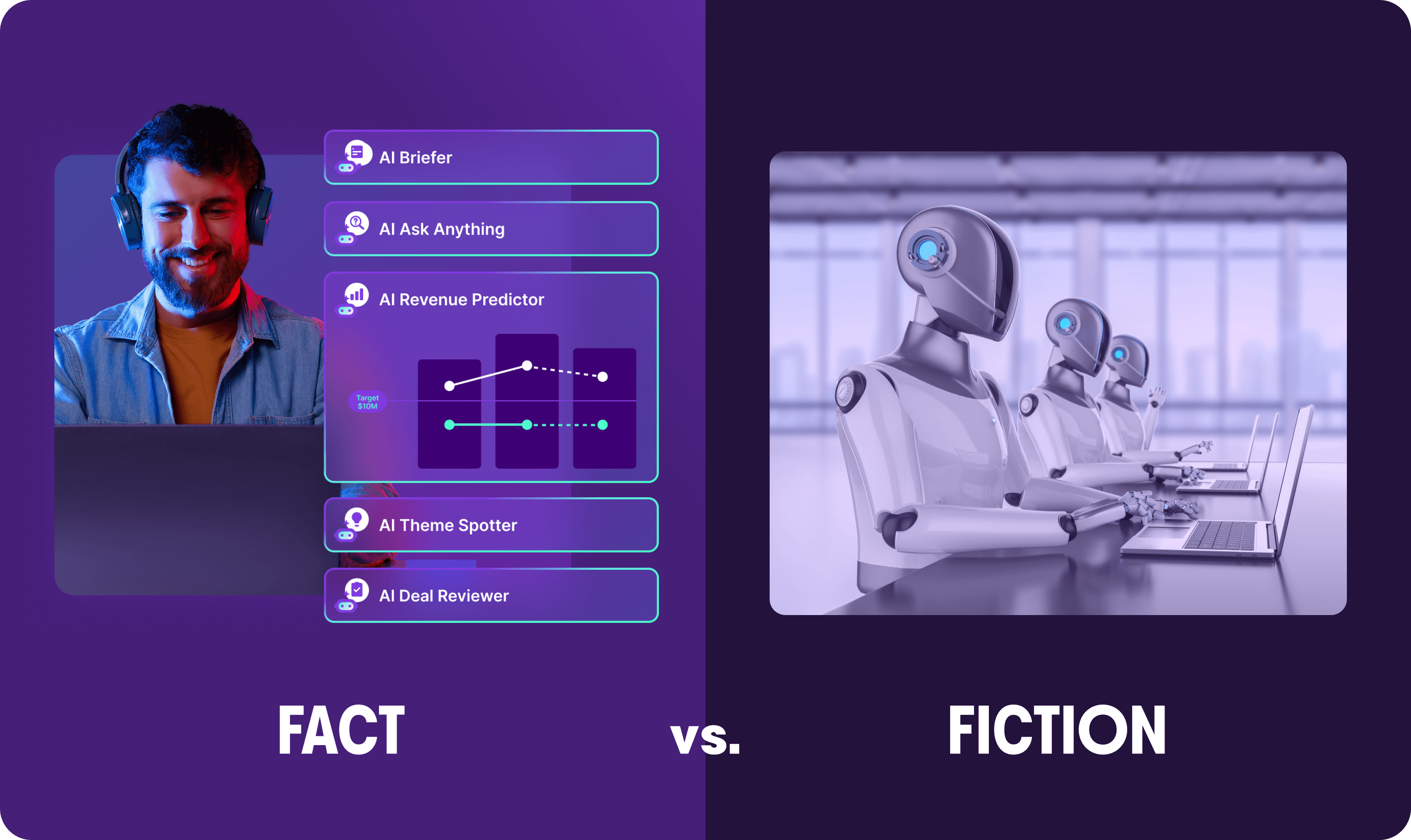Sales strategies
ServiceNow Just Posted A 98% Renewal Rate. Here’s How They Minimized Churn.

Jane Menyo
Content Author
Published on: September 26, 2023
We’ve all heard it: B2B solutions are facing more pressure than ever to justify value and minimize churn.
The benefits of minimizing churn are well-understood across our industry:
- Acquiring new customers is up to 25% as expensive as retaining existing customers (Harvard Business Review)
- Improving customer retention by 5% can boost your profits by anywhere from 25-95% (Bain & Company)
- The success rate of selling to an existing customer is 60-70%, while the success rate of selling to a new customer is only 5-20% (Market Metrics)
Minimizing churn is more affordable, more profitable, and makes it easier for your sellers to succeed.
So, what can sellers do to minimize churn and outperform in today’s market?
Gong recently sat down with CJ Desai, President and Chief Operating Officer of ServiceNow. Since its founding in 2004, ServiceNow has grown its revenue to $7.254B—and perhaps more impressively, posted a renewal rate of 98%. So, we knew Desai would be the right person to weigh in on retention best practices.
3 ways to minimize churn in today’s macroeconomic environment
Here are the key takeaways from our discussion.
1. Never take your eye off the customer experience
As Desai told us the story of ServiceNow’s growth, one of his most compelling points was how customers have been the lifeblood for innovation at ServiceNow, from the very beginning. ServiceNow’s founder Fred Luddy key impetus for starting the company and crafting its capabilities was the absence of solutions to customers’ most urgent needs.
“Customers have been our North Star all along,” Desai said. They are embedded in ServiceNow’s Purpose and our Values, and in the day-to-day conversations across every organization in the company. “The questions we are always orienting ourselves around are:
How will what I do ultimately impact our customer? What do our customers think of this innovation? How can we make their experience better, easier, and help them scale?
2. Expect speed bumps, and use them as opportunities to strengthen customer relationships
ServiceNow’s path to $7B+ has featured many of the non-linearity and pivots common to startups. In the company’s early days, Desai explained, all Luddy said to customers was that they could use it for “digital automation.” ServiceNow’s value proposition was wide open; they were among the earliest cloud-native companies, but they didn’t have a clear vision of how they would specialize.
That was until customers began asking for IT service management (ITSM). ServiceNow’s competition had been slow to transition to the cloud, creating an opportunity for the company to fill a market void and serve the customer. This pivot to ITSM gave ServiceNow its first burst of momentum.
Seeking and adapting to customer feedback has continued to be integral to ServiceNow’s growth and success. Now, they power this adaptability with a combination of human and machine analytics, using Gong as their platform of choice for ingesting and analyzing customer interactions from all global regions.
3. Make the most out of today’s AI solutions
Reflecting on ServiceNow’s journey, Desai recounted the audacious commitments of its former CEOs. In 2016, having just crossed the $1B revenue threshold, then CEO Frank Slootman projected that the company would reach $4B in revenue by 2020. Two years later, new CEO John Donahoe stated that his goal was to get ServiceNow to $10B.
This created urgency within ServiceNow to track these commitments, and if they weren’t on track, how to address that. This led to their using machine learning (ML) models to assess factors related to past revenue performance—e.g., pipeline, conversation patterns (fueled by revenue intelligence tools like Gong), and customer behavior within industries, products, geographies, and segments. They then looked at their current state in each of those areas and made revenue performance predictions. These ML models have proven useful in holding ServiceNow accountable to their ambitious goals and their ability to proactively adapt their selling strategies when necessary.
The future is, and will always be, the customer
ServiceNow had the innate understanding of the value of customer-focused innovation from day one. Something that more and more companies are tuning into as integral to their customers and their own success. And today, there are more sophisticated solutions than ever for powering your customer-facing teams.
If you aren’t already, learn why thousands of organizations are harnessing the unfiltered voice of their customers by using Gong.

Content Author
Jane Menyo is the Head of Customer Marketing at Gong, where she built the customer marketing department from the ground up. She focuses on driving customer engagement, retention, and growth, helping to position Gong as a leader in revenue intelligence. With extensive experience in developing customer-centric strategies, Jane excels at creating meaningful journeys that foster advocacy and loyalty. Prior to Gong, she held senior marketing roles at ON24, where she led solutions marketing and developed go-to-market strategies. Jane is passionate about leveraging data-driven insights to enhance customer experiences and drive business impact.
Discover more from Gong
Check out the latest product information, executive insights, and selling tips and tricks, all on the Gong blog.



